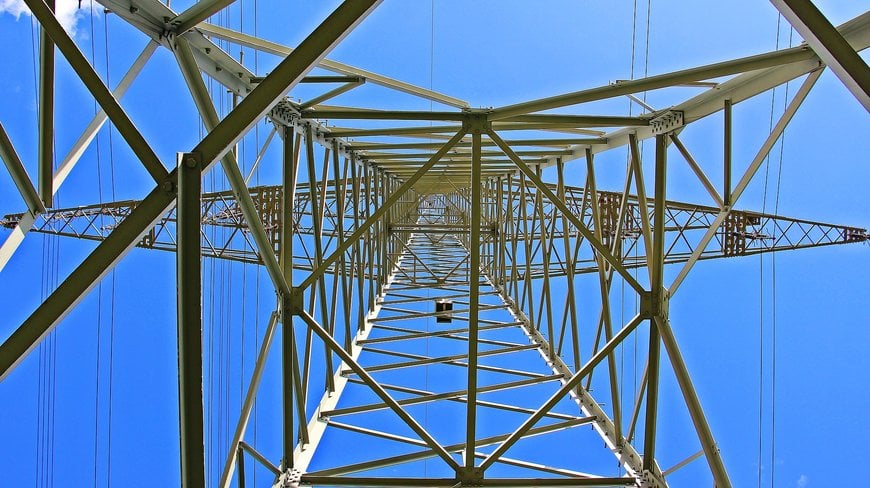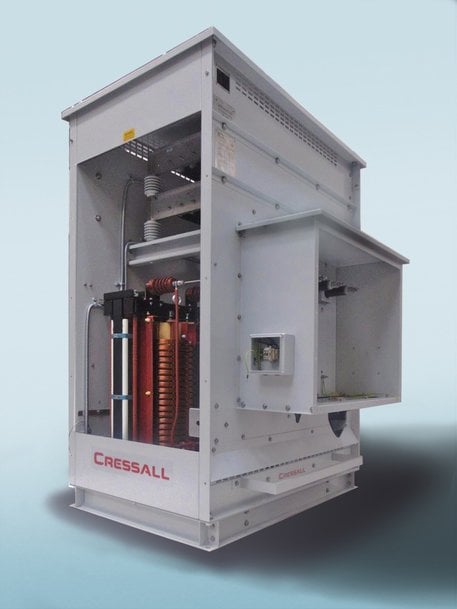www.magazine-industry-usa.com
24
'21
Written on Modified on
Protecting power systems
The benefits of neutral earthing transformers for safe transmission.

Thanks to the health and wellness scene, the term ‘grounding’ has taken on a whole new meaning. Connecting directly with the Earth’s surface by walking barefoot is thought to enable the ground’s free electrons to restore the body’s energy balance, alleviating illness. Similarly, in electricity transmission, earthing stabilises the electrical system, helping to prevent damage from earth fault currents. Here, Martin Nicholls, sales director at power resistor manufacturer Cressall, explores the benefits of neutral earthing transformers for electricity transmission.
Neutral earthing transformers (NETs) are typically found in three-phase power systems. Three-phase systems form the majority of electrical networks, especially when introducing renewable energy to the grid. Many systems have delta connections, which means that a closed loop is formed, and there is no neutral terminal.
Without a neutral, an electrical system remains ungrounded, which risks destabilising the entire system if subjected to an earth fault. In a worst-case scenario, this could result in dangerous transient overvoltages and extreme damage to equipment. So, how does an NET mitigate these risks?
Preventing problems
The primary function of an NET is to provide a neutral, and from this a single electrical line linked to earth. Using the earth gives a way to add protective current transformers and relay to the system to detect earth fault current to open upstream circuit breakers, which can be used to clear any potential faults without negatively impacting operations. NETs create an artificial neutral through one of two possible configurations: a zig-zag connection or a star-delta arrangement.
Although these configurations are different, they perform the same function — to provide a neutral point from which the electrical system can be grounded. A grounded system is significantly safer than an ungrounded system. However, for optimum safety the transformer should be used in conjunction with a neutral earthing resistor (NER) — this adds resistance to the circuit to limit the fault current to a known level.
A NER is placed in the neutral line of the NET so that, in the event of a fault, excessively high currents do not travel down the neutral line. The NER absorbs any fault currents and safely dissipates them as heat. This ensures that any protective relaying equipment remains operational, while also preventing thermal damage to the system’s components.

Monitoring change
NETs also facilitate monitoring of electrical system operations. Since faults flow through the NER, a type of instrument transformer known as a current transformer (CT) can be placed before the resistor to allow instruments to monitor any changes.
The CT is responsible for providing a ratioed signal, scaling the large values of voltage or current present in the system down to protective measuring instruments that can be easily read. They are found at all generating stations, electrical substations and in power distribution networks.
By continuously measuring and monitoring the operations of the power system, the CT allows operators to identify any small changes in voltage, current or function. This helps them to better plan maintenance and enhance system availability, which in turn reduces downtime and ensures a consistent power output.
Cressall produces systems that include dry type NETs and resistors to suit a variety of applications, which have power ratings ranging from ten seconds to continuous. The NET and NER are combined in a single enclosure with excellent temperature tolerances to ensure continued operation even after a large fault current occurs.
‘Grounding’ is hailed by many as the latest health trend, ensuring that the body remains in equilibrium to promote proper function, and it’s vital we adopt the same approach when it comes to protecting power supply. Be it a smaller commercial electricity production or a gigantic offshore wind farm, NETs can be essential to mitigating faults and keeping our power systems safe when grounded.
www.cressall.com

